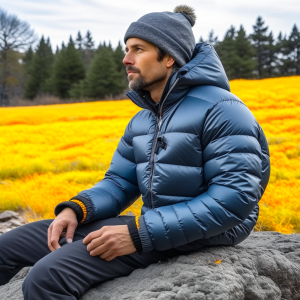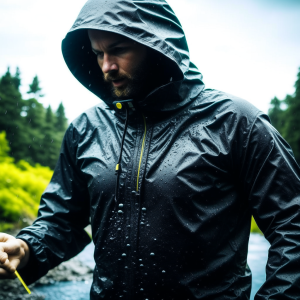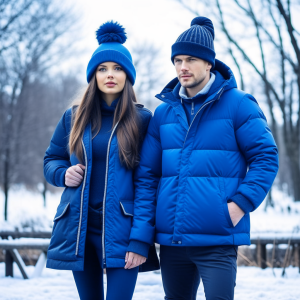Unlock the Secrets to Layered Cold Weather Clothing for Ultimate Warmth and Trendy Style
As the winter season approaches, bringing with it a chilling embrace, the quest for both warmth and stylish attire becomes increasingly important. With temperatures plummeting, layering our clothing becomes essential. Have you ever considered the science behind effective layering techniques? This comprehensive guide will delve into the principles of layering, showcasing why certain garments excel in safeguarding against biting cold. By understanding these strategies, you will be empowered to remain both cozy and fashionable throughout the winter months, ensuring you never have to choose between comfort and style.
Layering your clothing transcends mere fashion choice; it represents a strategic approach to enhancing heat retention and overall comfort in frigid environments. When temperatures drop, our bodies instinctively try to preserve heat by constricting blood vessels, which can lead to cold extremities. Unfortunately, this natural reaction often does not suffice to keep us warm. This is where the tactical application of layering comes into play, allowing us to create an effective barrier against the cold while retaining mobility and comfort, enabling outdoor activities without discomfort.

Establish Your Base Layer: The Fundamental Element for Winter Warmth
The base layer is the bedrock of your winter wardrobe, meticulously designed to fit snugly against your skin while providing crucial insulation. To fully appreciate the importance of this layer, we must explore the intricacies of moisture management and its significant impact on your warmth and comfort during the impending cold months. By understanding these dynamics, you will be equipped to select the most suitable materials and designs that maximize the effectiveness of your winter gear, ensuring you remain warm and dry.
Harnessing Moisture-Wicking Fabrics for Enhanced Comfort
Choosing the appropriate fabric for your base layer is crucial for effective moisture management. The significance of moisture-wicking properties cannot be emphasized enough. These specially engineered fabrics excel at drawing moisture away from your skin—whether it arises from perspiration or external dampness—thereby preventing discomfort and chill. A high-quality base layer not only creates a protective moisture barrier but also ensures you stay dry and cozy, even under challenging weather conditions, significantly enhancing your overall warmth and comfort, and making your winter experience far more enjoyable.
Exploring Insulation: Advantages of Merino Wool and Synthetic Fabrics
Next, we will investigate how materials like merino wool and synthetic fibers enhance the insulating properties of your base layer. Merino wool is celebrated for its natural warmth and breathability, making it an outstanding choice—it delivers effective insulation while adeptly wicking moisture away. Conversely, synthetic materials such as polyester and nylon provide a wonderful combination of durability and insulation, creating a warm microclimate next to your skin that efficiently retains body heat, keeping you comfortable even in the harshest conditions, making your layering strategy more effective.
Achieving the Perfect Fit: Key Considerations for Base Layer Performance
Selecting the right fit for your base layer goes beyond simply choosing your usual size; it’s about optimizing performance. A snug fit ensures constant contact with your skin, enhancing both insulation and moisture-wicking capabilities. However, striking the right balance is essential—too tight can restrict movement and comfort, while too loose may impede efficiency. Consider your activity level and layering method to ensure that your base layer integrates seamlessly with your other winter garments, allowing for maximum effectiveness and comfort throughout your winter adventures.
In essence, the base layer is more than just another piece of clothing; it functions as a sophisticated moisture-wicking and insulating shield against the harsh winter elements. By grasping the unique properties of materials like merino wool and synthetic fibers, along with mastering the fit, you can elevate your base layer from a simple garment to a crucial component of your defense against the cold, enhancing your overall winter experience.
Discover the Insulating Layer: Your Essential Tool for Retaining Body Heat
 As we transition to the insulating layer, we focus on its critical role in capturing and retaining heat around your body. This layer is vital in the science of heat retention, serving as a protective cocoon against harsh winter elements. We will examine essential factors such as warmth-to-weight ratios, the benefits of down insulation, and the eco-friendly advantages of synthetic alternatives, all of which contribute to effective heat management and overall comfort in cold conditions.
As we transition to the insulating layer, we focus on its critical role in capturing and retaining heat around your body. This layer is vital in the science of heat retention, serving as a protective cocoon against harsh winter elements. We will examine essential factors such as warmth-to-weight ratios, the benefits of down insulation, and the eco-friendly advantages of synthetic alternatives, all of which contribute to effective heat management and overall comfort in cold conditions.
Understanding Warmth-to-Weight Ratios for Optimal Insulation Selection
Grasping the concept of warmth-to-weight ratios is essential when selecting an insulating layer. This principle emphasizes that insulation materials should provide exceptional warmth without adding unnecessary bulk. Essentially, it’s about maximizing warmth while minimizing weight, allowing for free and comfortable movement. This balance is particularly crucial for outdoor enthusiasts who seek effective insulation without feeling encumbered, thus enabling unrestricted activity in cold conditions, whether skiing, hiking, or simply enjoying a winter walk.
Down Insulation: The Ultimate Lightweight Warmth for Outdoor Enthusiasts
Down insulation is renowned as the preferred choice for those seeking unparalleled warmth in a lightweight form. Sourced from the soft feathers of ducks and geese, down is famed for its remarkable warmth-to-weight ratio. Its lightweight and compressible nature makes it ideal for winter adventurers who require effective insulation without compromising mobility. Understanding the allure of down insulation is crucial in appreciating its role in creating an insulating layer that seamlessly embodies warmth, comfort, and flexibility, elevating your winter gear to new heights.
Choosing Synthetic Insulation: Ethical Warmth for Diverse Conditions
Synthetic insulation materials, primarily manufactured from polyester fibers, have gained popularity as ethical alternatives in the insulation landscape. What distinguishes synthetic insulation is its ability to retain heat even in wet conditions, an area where down may falter. This resilience in unpredictable weather makes synthetic fabrics suitable for various climates. Moreover, opting for synthetic options aligns with ethical considerations, allowing you to enjoy warmth and comfort without compromising your values, making it a smart choice for environmentally conscious consumers.
Selecting the Right Thickness: Precision in Insulation Layering
Choosing the appropriate thickness for your insulating layer requires careful consideration; precision is essential. Assess the expected level of cold exposure alongside your layering method when determining thickness. In milder climates, a thinner insulating layer may suffice, whereas harsher conditions may necessitate a thicker, more robust choice. By understanding the nuances of insulation thickness, you can tailor your insulating layer to meet the specific demands of your winter activities, ensuring optimal comfort and protection.
Ultimately, the insulating layer transcends traditional clothing roles, evolving into a strategic ally in the battle against the cold. By deciphering the complexities of warmth-to-weight ratios, appreciating the benefits of down insulation and synthetic alternatives, and providing guidance on thickness selection, we transform the insulating layer into a calculated defense mechanism against winter’s icy grip, enhancing your ability to enjoy the season to the fullest.
Your Outermost Layer: The Essential Barrier Against Winter’s Harsh Elements
The outermost layer acts as your crucial barrier against biting winds and frigid temperatures. This layer serves dual purposes: it protects against environmental elements while also playing a significant role in moisture management. As we further explore the outer layer, we will uncover the importance of breathability, the transformative effects of DWR finishes and Gore-Tex membranes, and the essential windproof features that enhance insulation efficiency, ensuring you stay warm and comfortable no matter the conditions.
Prioritizing Breathability: The Key to Comfort and Moisture Management
Often underestimated, breathability is a critical feature of the outer layer that significantly influences overall comfort. This characteristic pertains to the fabric’s ability to allow sweat vapor to escape from your body while simultaneously preventing external moisture from infiltrating. Achieving this delicate balance keeps you dry and comfortable, mitigating the chilling effects of trapped moisture. A breathable outer layer is essential for maintaining a cozy microclimate within your clothing, ensuring exceptional comfort during inclement weather, enhancing your overall winter experience.
DWR Finishes and Gore-Tex: The Pinnacle of Cold-Weather Waterproofing Technology
 DWR (Durable Water Repellent) coatings and Gore-Tex membranes lead the charge in cold-weather outerwear technology. DWR finishes impart water-repellent properties to fabrics, creating a formidable barrier against rain, sleet, and snow. Gore-Tex and similar technologies elevate waterproofing by offering an impeccable balance of impermeability and breathability. Understanding how these technologies work together is essential for staying dry and comfortable, even in the most severe weather conditions, allowing you to enjoy outdoor adventures without worry.
DWR (Durable Water Repellent) coatings and Gore-Tex membranes lead the charge in cold-weather outerwear technology. DWR finishes impart water-repellent properties to fabrics, creating a formidable barrier against rain, sleet, and snow. Gore-Tex and similar technologies elevate waterproofing by offering an impeccable balance of impermeability and breathability. Understanding how these technologies work together is essential for staying dry and comfortable, even in the most severe weather conditions, allowing you to enjoy outdoor adventures without worry.
Windproof Features: Strengthening Your Defense Against Cold Winds
Windproof attributes are vital in freezing weather, particularly when bitter gusts can penetrate even the sturdiest fabrics. The windproof outer layer functions as an impenetrable barrier against cold air, enhancing comfort while protecting the insulation of the inner layers. By effectively blocking frigid winds, your outer layer becomes a formidable defender, ensuring that your carefully chosen layers work in tandem to keep you warm and shielded from the harsh elements, making your winter outings far more enjoyable.
In essence, the outermost layer is more than just a protective shell; it serves as a sophisticated barrier that expertly balances breathability and waterproofing. By grasping the significance of breathability, delving into the advancements of DWR finishes and Gore-Tex membranes, and understanding the vital role of windproof features, we elevate the outer layer into a dynamic garment that excels in style, functionality, and weather resistance, allowing you to conquer winter with confidence.
Effective Strategies for Maximizing Warmth and Style This Winter
With a solid understanding of effective layering established, let’s explore practical tips and strategies to enhance your cold-weather experience, seamlessly merging warmth with enduring style. Accessories are instrumental in winter attire, often acting as unsung heroes that can elevate your wardrobe. From the essential warmth provided by well-chosen gloves to the stylish touch of a cozy hat, not to mention the comfort of thermal socks, these seemingly minor details play a crucial role in achieving a fashionable and comfortable winter ensemble, ensuring you look good while staying warm.
The Indispensable Role of Accessories: Function Meets Aesthetic Appeal
Accessories serve as more than mere embellishments; they are vital components of your defense against the cold. Beyond their visual appeal, items such as gloves, hats, and thermal socks fulfill indispensable functions in enhancing your overall warmth. By thoughtfully integrating these accessories into your winter wardrobe, you can ensure that every part of your body is shielded from the chill, effectively preventing precious body heat from escaping into the icy air, which is essential for maintaining comfort during winter activities.
Investing in Quality Accessories: Recommendations for Ultimate Comfort and Style
The quest for warmth extends beyond your base and insulating layers; it also involves carefully selecting accessories. Invest in high-quality gloves crafted from insulating materials like fleece or lined leather to create a robust barrier against the cold. A warm hat with extra insulation or a cozy faux-fur lining not only exudes style but also aids in heat retention. Opt for thermal socks made from merino wool or advanced synthetic blends to guarantee maximum warmth and effective moisture management, ensuring your extremities remain cozy and dry.
Fashion-Forward Tips: Merging Functionality with Trendy Style
Staying warm during frigid temperatures doesn’t have to compromise your sense of style. Utilize these savvy styling techniques to navigate the winter landscape with elegance and flair. Experiment with layering various textures in your outfit to create visual intrigue while simultaneously enhancing insulation. Choose winter-appropriate colors that complement the snowy backdrop, and don’t hesitate to accessorize with vibrant pieces like a bold scarf or fashionable earmuffs to elevate your overall appearance, ensuring you stand out in any winter setting.
Ultimately, accessories are the understated architects of a well-rounded winter outfit. They not only enhance warmth but also allow you to express your personal style even in the coldest conditions. By selecting high-quality accessories and thoughtfully styling your winter wardrobe, you can conquer the chill while showcasing undeniable elegance, making your winter outings both enjoyable and stylish.
Embrace the Perfect Fusion of Style and Functionality in Your Winter Wardrobe
As we conclude our exploration of mastering the cold, it’s vital to recognize the significance of style in winter clothing. Dressing for the cold doesn’t mean sacrificing your fashion sense; rather, the current fashion landscape celebrates the fusion of functionality and flair. Numerous outdoor and fashion brands have acknowledged and embraced the demand for winter gear that not only keeps you warm but also radiates confidence and modern elegance, redefining the standards of cold-weather apparel.
The Evolution of Cold-Weather Clothing: A Stylish New Era of Functionality
 The cold-weather clothing industry is undergoing a renaissance, where winter gear transcends mere functionality to embody innovation and style. Designers and brands increasingly recognize the necessity for clothing that seamlessly merges practicality with aesthetic appeal. This shift has ushered in a new era of outerwear that not only provides warmth but also captivates with its visual charm, making winter attire more appealing than ever.
The cold-weather clothing industry is undergoing a renaissance, where winter gear transcends mere functionality to embody innovation and style. Designers and brands increasingly recognize the necessity for clothing that seamlessly merges practicality with aesthetic appeal. This shift has ushered in a new era of outerwear that not only provides warmth but also captivates with its visual charm, making winter attire more appealing than ever.
Leading Brands: The Intersection of Style and Practicality
Several brands are at the forefront of this style evolution, skillfully merging fashion with functionality in their winter apparel. Canada Goose is renowned for its luxurious down coats that deliver extraordinary warmth without sacrificing style. The North Face incorporates cutting-edge technology into its designs, creating outerwear that harmonizes chic aesthetics with practical functionality. Meanwhile, Moncler has redefined the puffer jacket, transforming it into a high-fashion statement piece, showcasing that winter clothing can be both functional and runway-ready, appealing to a broad range of consumers.
Effective Styling: Elevate Your Winter Fashion Game with Confidence
Now, let’s discuss how to effectively blend warmth and style in your winter outfits. Select standout pieces that serve both functional and aesthetic purposes, such as a beautifully tailored wool coat or a sleek parka that acts as the centerpiece of your ensemble. Experiment with layering a chunky knit sweater over a fitted jacket for a cozy yet stylish look. Don’t hesitate to introduce vibrant colors into your winter wardrobe by accessorizing with striking scarves or trendy boots, allowing you to showcase your personality even in the coldest conditions.
Ultimately, embracing style in the cold is no longer a contradiction; it’s a vibrant reality shaped by a dynamic fashion industry. As fashionable cold-weather gear emerges, championed by innovative brands, the narrative shifts from mere survival to personal expression. So, immerse yourself in this style renaissance, choose pieces that empower you, and redefine fashion amid the wintry embrace of the season, ensuring you face the cold with confidence and style.
The post Cold Weather Clothing Layers: The Science Explained appeared first on Survival Bite.
The Article Cold Weather Clothing Layers Explained: Understanding the Science Was Found On https://limitsofstrategy.com
The Article Cold Weather Clothing Layers: The Science Behind Them First Appeared ON
: https://ad4sc.com


Ah, the mysterious art of layering! It’s like assembling a fashionable lasagna, but instead of delicious cheese, you’ve got base layers, insulation, and that chic outer shell—just without the marinara sauce. Speaking of which, I often think that if I can successfully combine enough layers to make me resemble a stylish Michelin Man, I’ve nailed the cold weather look. The trick, of course, is to achieve cozy without tipping over into the territory of the marshmallow.
I love how you emphasize the science behind layering—it’s something I think a lot of us overlook! Growing up in a cold climate, I learned the hard way that not all fabrics are created equal. I find that merino wool is the MVP of winter gear. It’s warm yet breathes well, which is key when you’re moving around or popping in and out from the cold.
I really appreciate your insights on layering for winter! I’ve found that mastering layering is not just about warmth; it can transform how we approach getting dressed each day. For instance, I love using merino wool as a base layer—not only does it wick moisture, but it also feels so soft against the skin, which is a game-changer during those long, chilly days.
It’s so true that mastering layering can really change how we approach getting dressed. I’ve experienced that shift too. Merino wool is such a fantastic choice—it really does make a difference in comfort. I remember hearing about it being favored by outdoor enthusiasts for exactly those reasons; it regulates temperature well and stays fresh longer than most materials.
I really appreciate how you captured the essence of layering as not just a style choice but a science that significantly impacts our comfort during the colder months. I’ve always found that the right base layers can make such a difference; for example, merino wool has become my go-to fabric. It manages moisture so well and keeps me warm without feeling bulky.
I completely resonate with your thoughts on layering. It really is a bit of an art and a science, isn’t it? Merino wool is such a fantastic choice; it’s impressive how it balances warmth and breathability while avoiding the bulkiness often associated with winter wear. I’ve found that investing in good base layers not only enhances comfort but also elevates the overall experience outdoors, whether it’s hiking, skiing, or just enjoying a chilly walk.